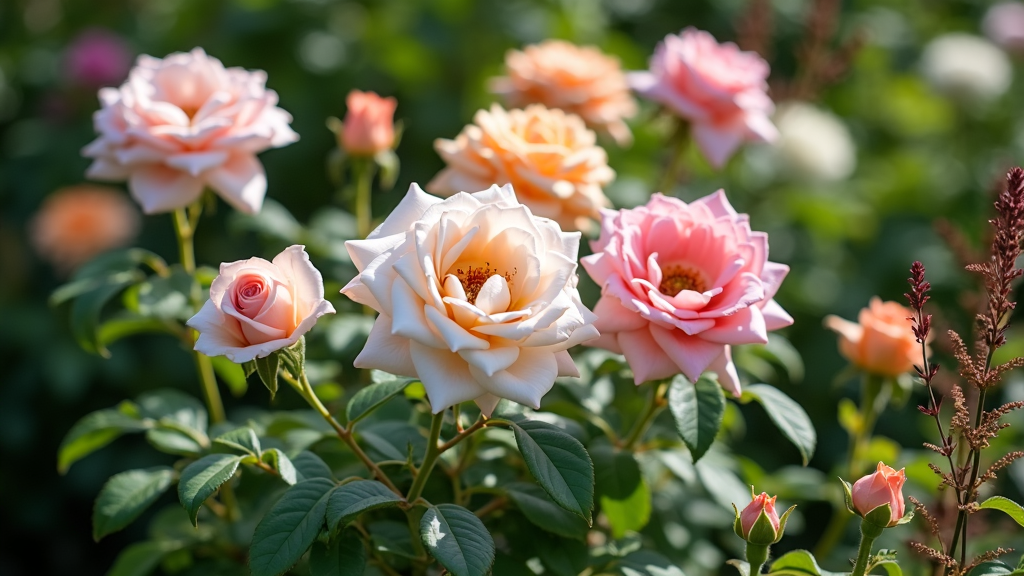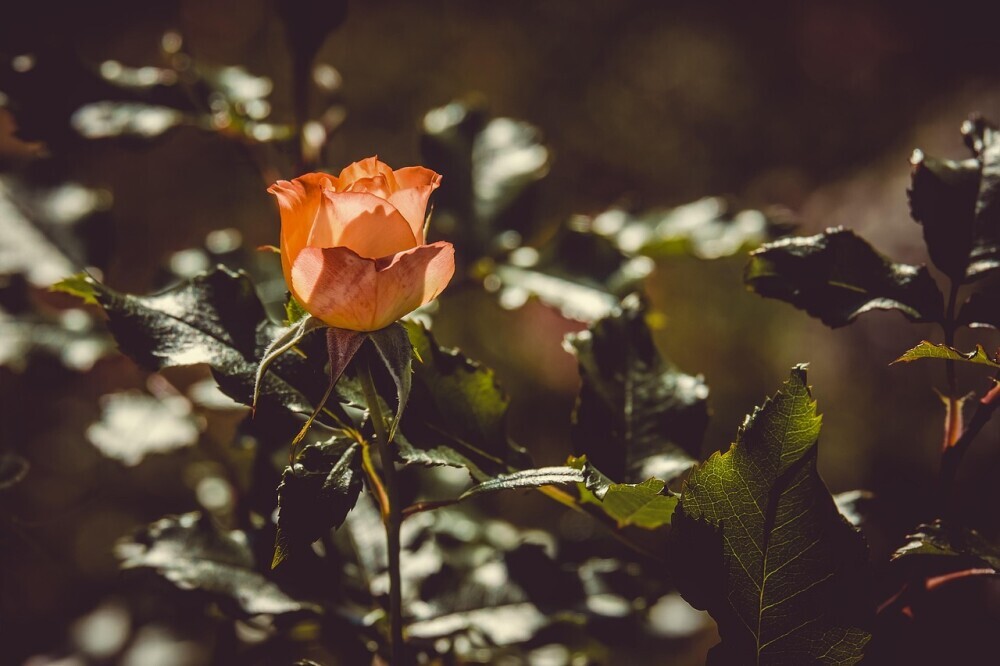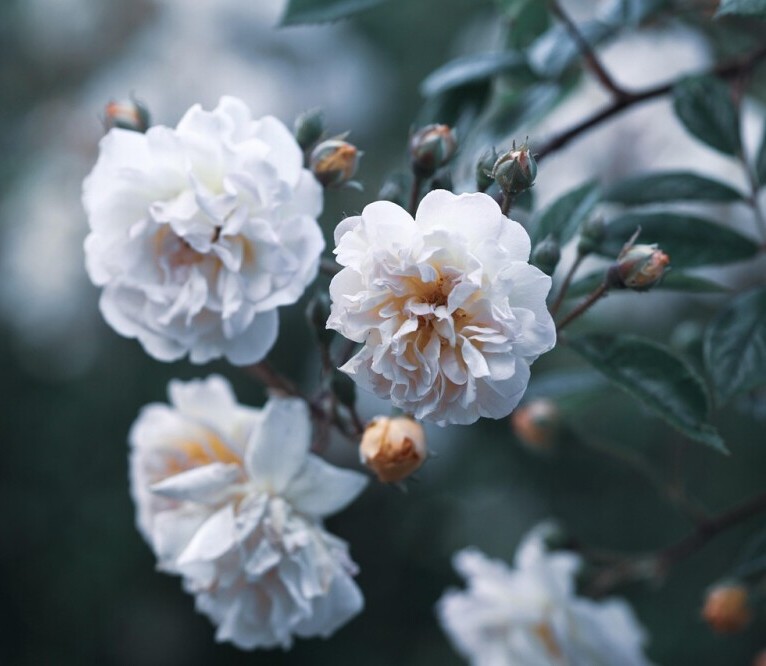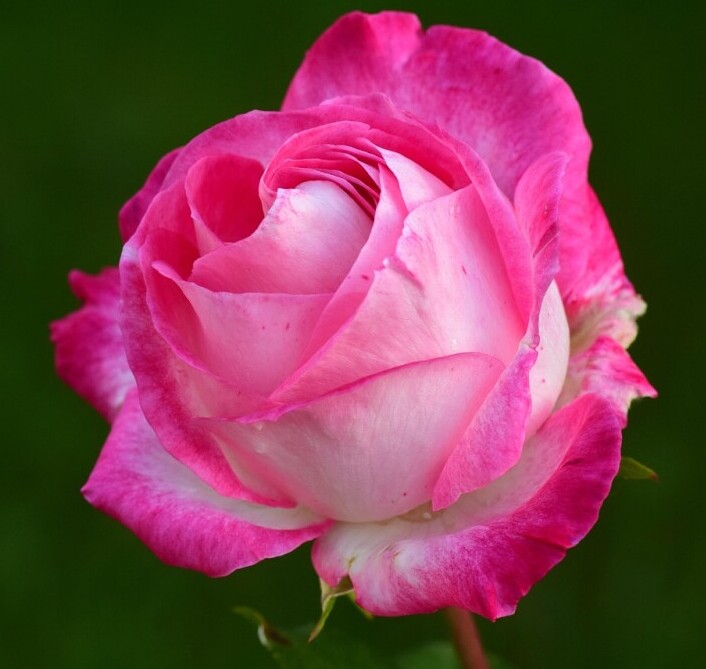Hybrid musk roses deliver a pretty interesting chapter in the world of garden plants.
While they may not always grab the spotlight like some other rose types, their background and development are really worth checking out.
Working through the story behind these roses, I’ll share what makes them unique, how their breeding developed, and what to look for if you’re thinking about adding them to your garden.

The Early Story of Hybrid Musk Roses
The tale of hybrid musk roses starts in the early 20th century, right around when gardeners were on the hunt for easier, healthier roses that fit in with cottage style gardens.
Unlike modern hybrid teas, these roses branch out with looser clusters of blooms, bringing a more natural look to the mix.
Joseph Pemberton, an English clergyman and rose enthusiast, is usually credited as the original breeder who kickstarted this group around 1912.
After inheriting a collection of roses, he focused on creating varieties with strong scents, healthy foliage, and blooms throughout the season.
What he produced quickly got gardeners’ attention for their reliability and welcoming vibe in landscape designs.
The first widely accepted hybrid musk is ‘Moonlight,’ introduced by Pemberton in 1913, which set the stage for dozens of other noteworthy varieties.
The actual name “hybrid musk” comes from the theory that certain old musk roses (Rosa moschata) played a part in their ancestry.
There’s still some debate about this. Some genetic research shows that other rose groups, such as Noisette and hybrid multifloras, also contributed to their DNA.
No matter how you look at it, their story is all about finding new forms and fragrances for garden use.
To get a sense of just how many roses now carry musk ancestry, check out recent rose trial lists and you’ll see hybrid musks still impress in bedding plant competitions, often standing out for their health and flower power.
Key Features That Make Hybrid Musks Stand Out
When gardeners describe hybrid musks, they often mention how reliable and low maintenance these roses can be compared to fussier varieties.
Here are some traits I find really appealing if you’re choosing roses for diverse conditions:
- Repeat Blooming: Hybrid musks rebloom in flushes, often covering themselves in blooms from early summer through fall.
- Fragrance: One thing that keeps people coming back to these is the soft to strong, musky or sweet scent. Some have old rose notes, while others lean toward fruity or clove type fragrances.
- Clustered Blooms: The blooms appear in open clusters, making them look almost cloudlike on the bush. Single, semidouble, and double forms exist, so you have plenty of options.
- Healthy Foliage: Many hybrid musks produce handsome, disease resistant leaves. This makes them useful for no spray gardens or spots where humidity often encourages blackspot or mildew.
- Flexible Growth: You can find compact hybrid musks for small gardens or sprawling forms that suit informal hedges, rose tunnels, or even small climbers.
For maintaining these features, a pair of Felco Classic Pruners or Fiskars Bypass Shears makes shaping and deadheading much easier. Pair them with durable Rose Gauntlet Gloves to protect your hands from thorns.
One of my favorite things is how these roses mix well with perennials and shrubs, instead of needing to stand alone in formal beds.
They look especially eye-catching when set against feathery grasses or deep green hostas, adding a relaxed but beautiful vibe to any border.
Understanding Hybrid Musk Breeding
Creating a new hybrid musk isn’t as simple as just crossing two favorite plants.
Pemberton and other breeders carefully selected parent plants for fragrance, disease resistance, and blooming style.
They often used crosses like Rosa multiflora (which adds vigor and clustering) and hybrid perpetuals or teas (which supplied color and repeat bloom).
Once breeders find a seedling with good qualities, they monitor how it stands up to weather and disease across a few seasons.
Over the years, breeders have also started to introduce more colors and rose forms, including shades of apricot, ivory, and pale yellow, on top of the usual pinks and whites.
It’s especially fun to track down newer cultivars at specialty nurseries, where you can spot limited releases with rare color blends or flower forms.
Popular modern hybrid musks sometimes also get crossed with classic shrub roses or even floribundas to improve hardiness or rebloom.
While Pemberton’s own program focused on scent and garden health, newer breeders keep experimenting with color and flower form.
There are now clusters with smaller leaves and stouter stems, making them better for windy gardens or as landscape mass plantings.
If you’re intrigued by rose breeding, resources like How to Breed Your Own Rose or other rose hybridization guides on Amazon are excellent for learning the process.
Growing and Caring for Hybrid Musk Roses
Hybrid musks fill some unique roles in the garden. They work as hedges, specimen shrubs, or even soft climbers when given support.
Here’s what I’ve found works best for growing these roses successfully:
- Site Selection: They handle partial shade better than most modern roses. About four to six hours of sun daily helps them bloom well and maintain healthy foliage.
- Soil: These roses like well draining, fertile soil. fertile soil enriched with Organic Compost or Rose Soil Conditioner helps establish young plants and keeps them blooming well into maturity.
- Water : Consistent watering (especially in their first two years) keeps clusters coming. A couple feedings of rose fertilizer in spring and midsummer is usually enough. Deep watering once a week with a Drip Irrigation Kit or Watering Wand ensures steady moisture without wetting leaves.
- Fertilizing – A couple of feedings with Rose And Flower Care in spring and midsummer keep blooms coming.
- Pruning: Hybrid musks need lighter pruning than hybrid teas. I usually trim them in late winter or early spring to shape and remove old growth. Don’t be afraid to cut a few long stems for the vase. They bounce back quickly. A Pruner Sharpening Tool keeps your cuts clean.
- Disease Resistance: Their foliage’s healthy reputation is well-earned, but a little spacing between plants helps keep air moving and keeps leaves dry.
I find them to be some of the most forgiving shrubs, even if you’re starting out or aren’t always on top of garden chores.
If you’re short on time, the lighter maintenance these roses require can make gardening less stressful and more rewarding.
Notable Varieties to Explore
I’d like to call out a few crowd pleasers in the hybrid musk category if you’re new to this rose group or just want to try something different:
- ‘Buff Beauty’ (1939): This is a favorite for its warm apricot yellow blooms and light scent. It gets big and looks great in the back of borders or as a hedge.
- ‘Ballerina’ (1937): Known for its dainty pink, single blooms with pale centers. It’s a frequent choice for mixed perennial beds and attracts pollinators.
- ‘Felicia’ (1928): Smoky pink blooms with an intense, sweet scent. The bush is quite full, making it ideal for informal screens.
- ‘Penelope’ (1924): Clusters of white to blush flowers with a strong musk fragrance. Healthy foliage and easy care make it a garden workhorse.
Beyond the classics, be sure to check out varieties like ‘Prosperity’ or ‘Cornelia,’ both offering subtle color blends and a wealth of blooms.
Plenty of other hybrid musks exist, so looking through specialty rose nurseries is worth your time if you want more colors and shapes.
Grown as specimen plants or in drifts, their ability to mix with both old and modern garden styles makes them extra versatile.
Challenges and Considerations for Gardeners
No plant is truly carefree, but hybrid musks offer a lot of flexibility. A few things come up occasionally that are worth watching for:
- Cold Hardiness: While most hybrid musks are pretty tough, some (especially older or less woody types) might need protection during really harsh winters. Adding a thick mulch layer can help roots stay protected.
- Pruning and Training: Because some can grow quite large, giving them enough space and training them as needed helps keep things tidy. Be sure to prompt new flower growth by removing spent clusters regularly during the season.
- Historical Names: Some older roses get labeled as hybrid musks even if their ancestry is mixed. Reading up or asking knowledgeable growers can help you select the right plant for your spot.
Careful research helps buyers make informed decisions, especially if you need something tough for a specific spot in your garden.
Don’t hesitate to check in with local rose societies or experienced garden centers for the best tips to match your climate and soil.
Even easygoing roses like hybrid musks benefit from extra care:
- Cold Hardiness – In colder regions, protect roots with Mulch or Bark Chips and consider Frost Protection Covers.
- Training – Larger types need space and support. Use Decorative Trellises or garden supports to keep them tidy.
- Disease Prevention – While generally healthy, spraying with Neem Oil during damp seasons can help prevent fungal issues.
Garden Uses
You’ll often find hybrid musks recommended for informal borders, hedges, and mixed plantings.
Their gentle style adds a vintage cottage look. I also see them play a role in pollinator gardens because of their open, single blooms.
If your goal is all-season interest, hybrid musks combine effortlessly with peonies, irises, or shrubs with striking foliage, making garden design easier.
Encourage biodiversity by adding a Bee and Butterfly Hotel nearby, and companion planting with Lavender Seeds or Marigolds for natural pest control.
Frequently Asked Questions
Plenty of people have questions about hybrid musk roses, so here are a few of the top ones I get:
Question: What is a hybrid musk rose, really?
Answer: Hybrid musks are a group of shrub roses bred mainly in England in the early 1900s. They’re known for their musk like fragrance, reliable growth, and clusters of soft-colored blooms. Their parentage usually involves musk, multiflora, and some tea or hybrid perpetual roses.
Question: Are hybrid musk roses easy to grow?
Answer: Yes, these roses are generally straightforward to grow, especially compared to fussier types. They offer good disease resistance and forgiving nature for newer gardeners.
Question: How big do hybrid musk roses get?
Answer: Most grow between 4 and 8 feet tall and wide, depending on the variety and care. Some can be trained as low climbers or left to arch, adding extra height and movement in the garden.
Question: Can I grow them in containers?
Answer: Some of the smaller types will do fine in large containers, but most hybrid musks show their best features when planted directly in a garden bed. They like to spread out a little and show off their loose form.
Why Hybrid Musks Deserve a Spot in Your Garden
If you’re searching for easygoing roses with a romantic, old-world vibe and reliable performance, hybrid musks tick a lot of boxes.
Their flexibility, scent, and ability to play well with other plants make them a fun group to try.
With the right spot, a little care, and some curiosity, you’ll have repeat blooms and classic beauty that keeps on giving season after season.
They stand out in both new and mature gardens—perfect for anyone who wants long-lasting color and a fragrance that seems to float on the breeze.
Ready to experiment?
Explore a few hybrid musk roses and see how they lift the mood and look of your own garden.
Track down unique cultivars and try blending them with your favorite perennials to create a beautiful, long-lived display that’s sure to be eye-catching all summer and into fall.
Our Top Amazon Picks for Hybrid Musk Rose Gardeners
Here are some recommended products to help you enjoy these roses:
- Felco Classic Pruners – Sharp and precise for clean cuts.
- Handyland Rose Pruning Gloves – Protects hands and arms.
- Rose and Flower Care – Organic formula for healthy blooms.
- Organic Compost Mulch – Improves soil and protects roots.
- Drip Irrigation Kit – Makes watering efficient and consistent.
- Bee and Butterfly Hotel – Encourages pollinators for better flower production.
- The Rose: The History of the World’s Favourite Flower – Dive deeper into rose history.
Happy gardening!!!!!!!
Here’s a little transparency: Our website contains Amazon affiliate links. This means if you click and make a purchase, we may receive a small commission. Don’t worry, there’s no extra cost to you. It’s a simple way you can support our mission to bring you quality content.”




Ooh, I’m obsessed with ‘Ballerina’—the little pink blooms are just so charming! ‘Buff Beauty’ is also on my list because I’ve seen it used as a hedge, and it looks absolutely stunning. This is such a great breakdown. Thank you for this type of content. I’ll follow you on social media to not miss when you upload.
Thank you so much, Ann, for your lovely comment.
I am happy to hear you are a fan of ‘Ballerina’ and ‘Buff Beauty’ – both are indeed stunning hybrid musk roses. ‘Ballerina’ is a classic with its delicate pink blooms, and ‘Buff Beauty’ is perfect for hedges or borders.
I’m glad you found the breakdown helpful!
I’d love to have you follow me on social media, and I’ll look forward to sharing more rose-related content with you.
Thanks again for your kind words